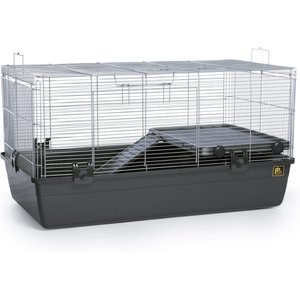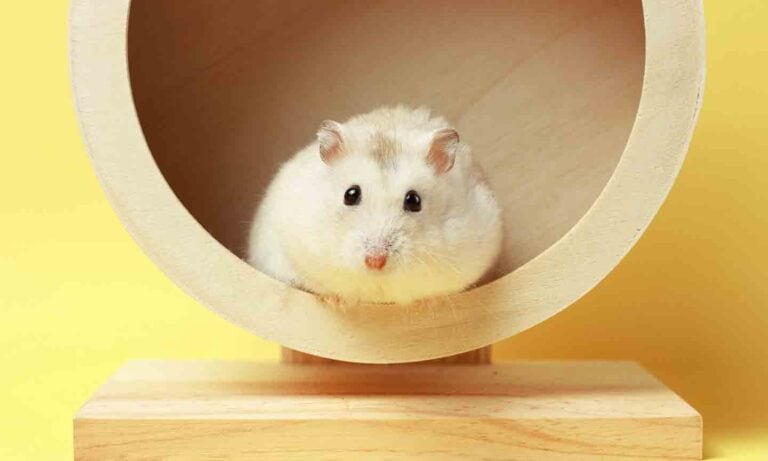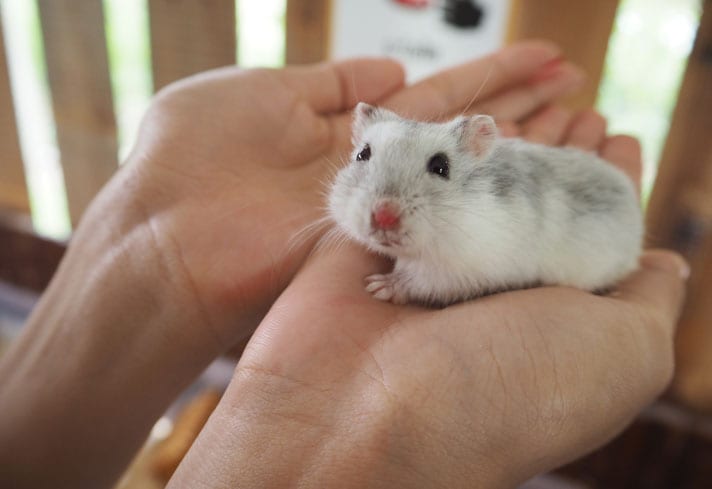From their inquisitive nature and sweet personalities to their cuddly appearance, hamsters make excellent pets. And while they can be lower-maintenance compared to dogs or cats, it’s important to provide proper hamster care for a long, healthy life.
If you’re considering adopting a hamster as a new pet, read on to learn more about these fun little furballs.
1 There are over 20 recognized species of hamsters.
That’s a lot of hamsters—and all are members of the Cricetidae family. Unlike dogs and cats, whose differences are due to variations in their breed, the visible differences in types of hamsters are because they’re entirely different species, says Tony Rose Adler, co-president of the California Hamster Association in Los Angeles.
While most species of hamsters are wild, there are five domesticated hamster species, which are:
- Syrian hamsters (Mesocricetus auratus): You’ve definitely come across these cuties at the pet store. Syrian hamsters, also called Golden hamsters, are the largest and most commonly kept due to their relatively docile personalities, Adler says.
- Winter White Dwarf hamsters (Phodopus sungorus): A small hamster whose coat turns white in winter (hence the name).
- Campbell’s Dwarf hamsters (Phodopus campbelli): Also known as Djungarian hamsters and Russian dwarfs, Campbell’s dwarf hamsters are social and active, making them fun pets to watch.
- Chinese hamsters (Cricetulus griseus or Cricetulus barabensis griseus): These unique hamsters are characterized by their slightly longer tail.
- Roborovski Dwarf hamsters (Phodopus roborovskii): This is the fastest and smallest of the hamster species, Adler says, and is therefore less suited to handling.
2 Hamsters are crepuscular.
It’s a common myth that hamsters are nocturnal, snoozing throughout the day and keeping active on their exercise wheel like a long-distance runner at night. Really, hamsters are crepuscular, meaning they’re awake at dawn and dusk and usually resting during the day and overnight.
3 Wild hamsters and domesticated hamsters have important differences.
According to the International Fund for Animal Welfare (IFAW), wild hamsters are larger than domesticated hamsters: They can grow up to 14 inches long, while a Syrian hamster can grow to about 7 inches. Additionally, wild hamsters are mostly nocturnal, while pet hamsters are crepuscular.
There are 15 species of wild hamster living in grasslands, fields, and meadows spanning from western European countries into western Asia. Sadly, the common hamster (Cricetus cricetus) is considered critically endangered.
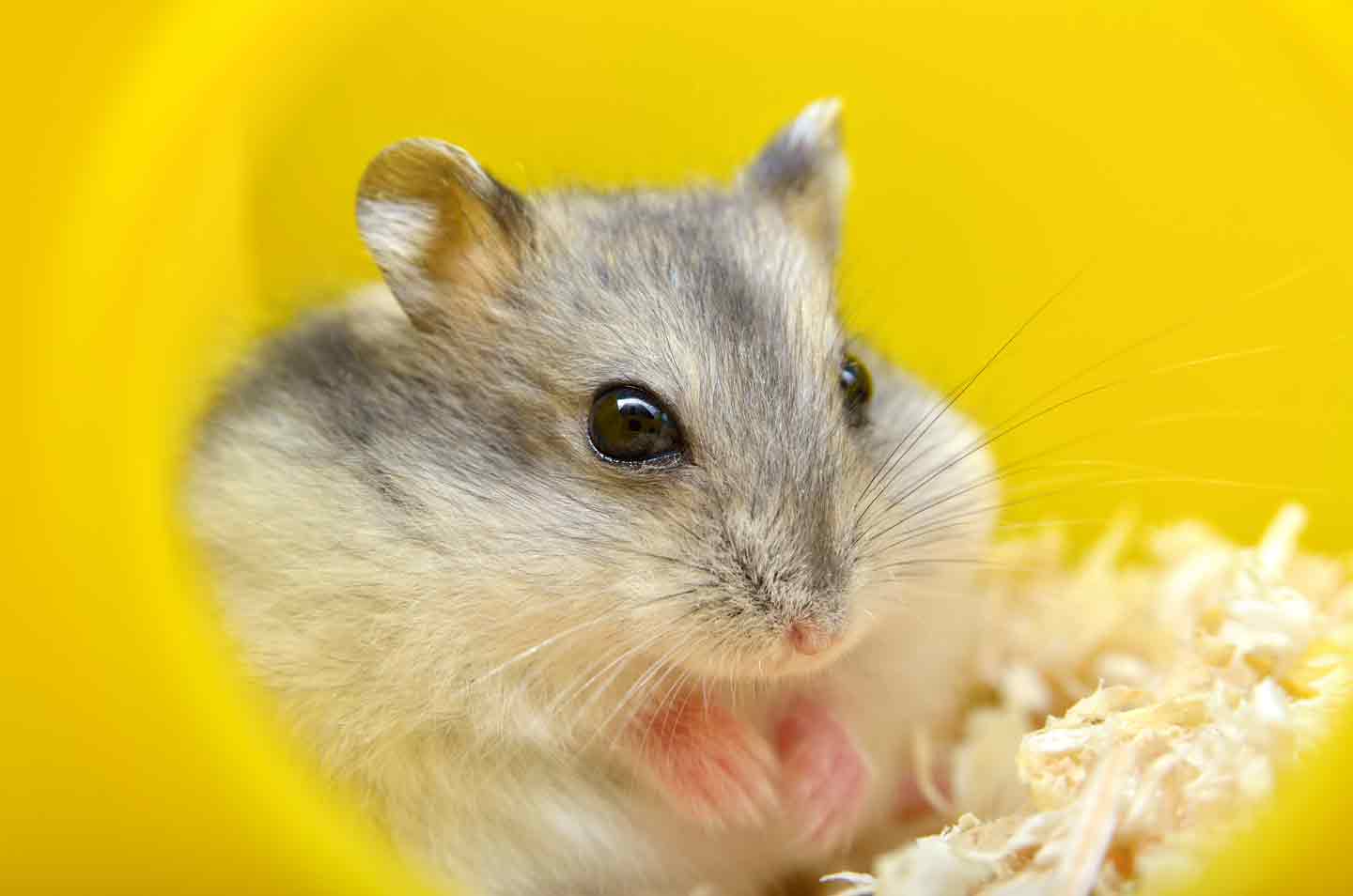
4 Hamsters have useful—and cute!—cheek pouches.
Have you ever seen a hamster with huge, puffed-out cheeks? They’re able to safely hoard and stuff their faces thanks to their cheek pouches. These cheek pouches are like long cul-de-sacs on the inside of both sides of their mouths, says Courtney Campbell, DVM, DACVS-SA, a small animal specialty surgeon at VetSurg in Ventura, California. They’re essentially invaginations—or long, wide sleeves with a dead end—of the oral mucosa.
Dr. Campbell notes that hamsters’ pouches can be used for transporting the following:
- Food
- Bedding
- Nesting material
- Their young (although this is rare)
Another fun fact: Hamsters can inflate their cheek pouches to increase buoyancy when they need to swim!
These pouches extend to the shoulders and are retracted by the cheek muscle, which evolved from their trapezius muscle, Dr. Campbell says. When it’s time to empty their cheek pouches, they simply push the contents forward with their paws. “My hamster, Quaratina, does this every night when she is adjusting her bed,” Dr. Campbell says.
5 A hamster’s front teeth never stop growing.
Hamsters’ front teeth, or incisors, continuously grow. This, Adler says, is why hamster-friendly chews are very important to their health. They help keep their front teeth at a healthy length, which helps prevent dental problems and other serious health issues.
6Hamsters prefer to be alone.
There’s a common misconception that hamsters are social or “need” friends. The truth is, they’d rather be lone wolves—er, hammies.
“All species of hamsters naturally live solitary lives in the wild, and this is the safest choice for them as pets too,” Adler says. “They only need you!”
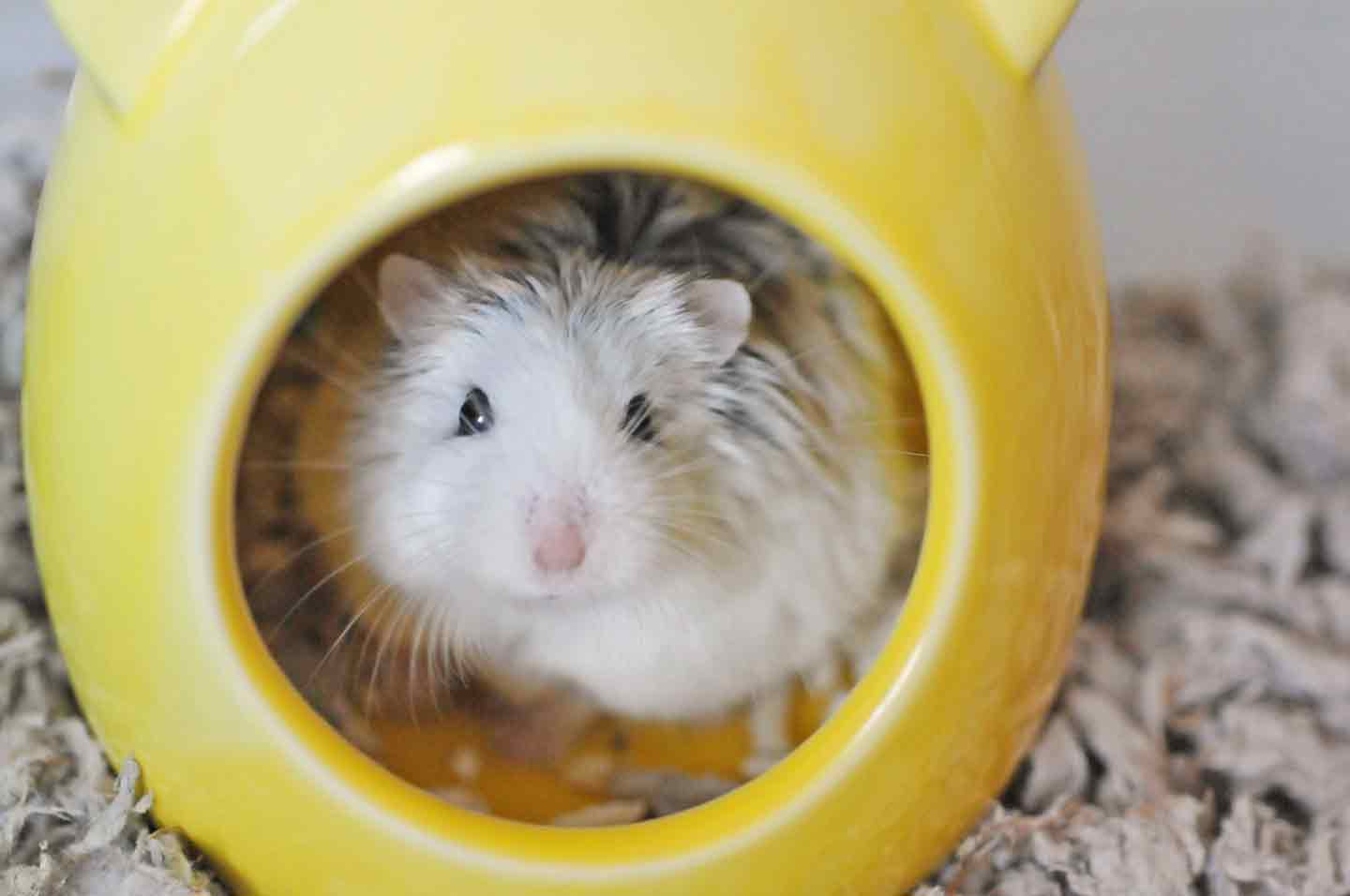
7They need a habitat with plenty of space.
If you’re looking for the best habitat for your hammy, Adler suggests looking for a hamster cage that’s secure, large, and provides a basin for deep bedding. In their natural habitat, they burrow and live across territories up to a square mile, she adds.
“While we can’t replicate that in our homes, the recommended minimum cage size for a hamster of any species is 600 square inches,” Adler says. They’ll also need a bar spacing of one-half inch or less to keep them from escaping.
She says different hamsters do best in different styles of cages:
- For female Syrian hamsters: A tank of 40 gallons or larger, with a screen top and clips, is necessary to keep these notoriously restless hamsters from escaping.
- For Roborovski hamsters: Tanks are also a great option for this species, as their small size makes it easy to escape most other cages.
- For male Syrian hamsters and adult dwarf hamsters: A bar cage, like the Prevue 528 or Ranch cage is great for these types of hamsters. Adler considers these two options to be easy to clean and highly customizable.
8Hamsters are omnivorous and coprophagic.
Hamsters eat all kinds of foods, including veggies and meat—and sometimes their own waste. (Yep, that’s what coprophagic means.)
In the wild, these little omnivores will eat seeds, grains, plants, and some invertebrates. However, domesticated hamsters thrive with pellets supplemented with fruits, vegetables, nuts, and animal protein, and with treats kept to a minimum. Dr. Campbell says it’s important to avoid seed-based diets to prevent obesity and selective feeding. Instead, give commercial pellets to ensure your hammy is getting all the nutrients they need.
9 The right essentials can make a world of difference to your hamster.
Along with a spacious cage, hamsters need enrichment items in their habitat to keep them happy and healthy. Adler says hamster essentials include:
- Paper-based or aspen bedding (for nesting, burrowing, and odor control)
- Hideouts (for a built-in burrow and a place to nest)
- A water bottle or bowl
- Chews (for healthy teeth)
- Sand and bowl (for bathing and soaking up excess oils)
Hamsters can also benefit from enrichment in the form of treats, an appropriately sized saucer wheel, and bendy bridges.
10 Hamsters can run up to 8 miles a day.
Hamsters love to run! So naturally, a proper wheel is important, Adler says.
“The number one tip for pet parents is to ensure the wheel is large enough that their hamster’s back does not arch into a ‘U’ shape while running,” she says. “This indicates the wheel is too small, and running on it will lead to spinal damage, arthritis, and/or obesity if they refuse to run at all.”
When looking for a safe, high-quality wheel, she suggests looking for one that’s at least 8 inches wide for dwarf hamsters and at least 12 inches wide for Syrian hamsters. Her recommendation is the Kaytee Comfort Wheel, which comes in both sizes.
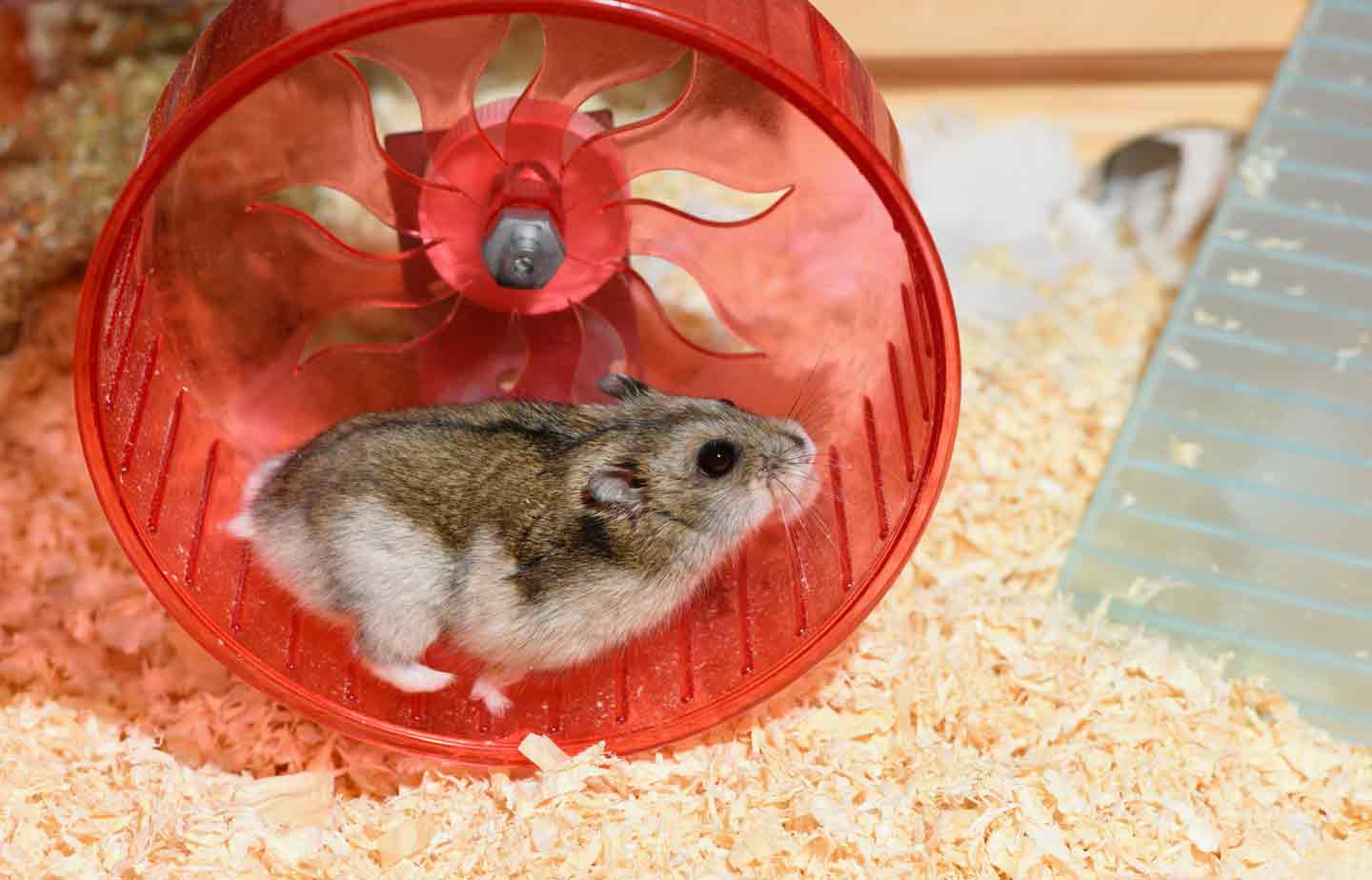
11 Syrian hamsters originated nearly 100 years ago.
Syrian hamsters are popular pets. The Syrian hamster (bred in captivity) is said to have originated from a litter of eight hamsters collected near Aleppo, Syria, in 1930, Dr. Campbell says.
12 Hamsters need lots of exercise.
Did you know hamsters’ exercise needs vary across sexes rather than species? “Female hamsters of all species are much more rambunctious and need a plethora of outlets for their energy,” Adler says. “Male hamsters tend to be more relaxed and lazy, but all hamsters still enjoy a good workout on their wheel.”
For floor time, she recommends using a safe playpen or a bathtub, with the drain plugged and toys added. However, she advises steering clear of hamster balls, despite their popularity.
“Hamsters cannot see very well and rely on their sense of smell to navigate,” she says. “Hamster balls strip them of this ability, which is very stressful. As well, the tiny air slots are perfect for catching little toes and inadvertently breaking ankles.”
13Hamsters generally live up to three years.
The average lifespan for a hamster can depend on their genetics and husbandry.
Dr. Campbell provides a general breakdown on pet rodent lifespans:
- Hamsters and gerbils: 2–3 years
- Mice: 1–3 years
- Rats: 2–4 years
- Guinea pigs: 5–7 years
In rare cases, it’s possible for hamsters to live beyond these estimates. According to Guinness World Records™, the oldest hamster ever was 4.5 years old!
14 Hamsters require different care compared to guinea pigs and gerbils.
While hamsters, guinea pigs, and gerbils are all rodents belonging to the Rodentia order, these three animals belong to different families:
- Hamsters (Cricetidae)
- Guinea pigs (Caviidae)
- Gerbils (Muridae)
These adorable critters are all considered pocket pets. However, their size as well as their care (e.g., dietary, exercise, and housing) varies from one to another.
15 Hamsters are great pets.
“The most common misconception is that hamsters are not good pets,” Adler says. “Many of the ‘problem’ behaviors associated with hamsters, such as biting and escaping, are actually due to stress and boredom.”
To prevent behavioral issues, she emphasizes the importance of providing a spacious cage with lots of enrichment.
It’s always best to research the different hamster species to learn more about their unique characteristics and needs before deciding which is right for you.
More About Hamsters
Share:


